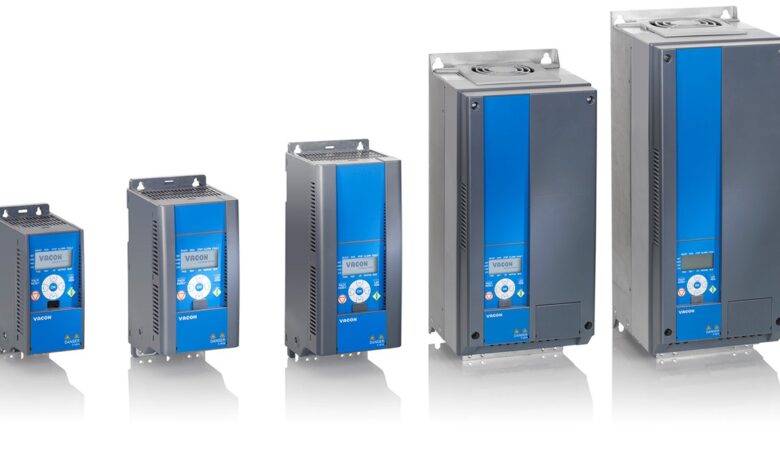Vacon and Danfoss Drives: The Power Behind Efficient Industrial Automation

Introduction to Vacon and Danfoss Drives
Ever wonder what keeps modern factories humming, conveyor belts moving smoothly, and heavy motors purring along without a hitch? Enter the unsung heroes of industrial automation: Vacon and Danfoss drives. These variable frequency drives (VFDs) are vital in ensuring energy efficiency, performance, and control in various industries. Today, we’ll break it all down — what they are, how they work, and why they matter so much in the automation world.
What are Variable Frequency Drives (VFDs)?
How Do VFDs Work?
At the heart of both Vacon and Danfoss systems is a technology called the Variable Frequency Drive (VFD). Think of VFDs as traffic controllers for electric motors — they regulate the speed and torque by adjusting the motor input frequency and voltage. This helps in smoother starts, controlled acceleration, and reduced wear and tear.
Benefits of Using VFDs
- Energy Savings: One of the biggest perks is reducing power consumption.
- Improved Process Control: You get smoother operation and reduced mechanical stress.
- Reduced Maintenance Costs: No more abrupt starts and stops that wear machines down.
- Flexibility: You can adapt operations to changing loads or processes on the fly.
Overview of Vacon
History and Evolution
Vacon, founded in Finland in the 1990s, quickly rose to prominence as a leading manufacturer of VFDs. Their innovation-focused mindset positioned them as a reliable and energy-efficient solution provider.
In 2014, Danfoss acquired Vacon, strengthening its position in the global drives market.
Core Features of Vacon Drives
- Modular Design: Easy to customize and scale.
- High Efficiency: Up to 98% in most models.
- Robust Control Algorithms: Ensures precise motor control.
- Built-in Safety Features: For overload, short circuits, and overheating.
Industries That Use Vacon
- HVAC
- Pulp & Paper
- Water Treatment
- Marine and Offshore
- Mining
Introduction to Danfoss Drives
Company Background
Danfoss is a global leader in engineering solutions that stretch beyond drives — including climate and energy technologies. They entered the drives space early and have since developed some of the most cutting-edge VFDs on the market.
Why Danfoss Stands Out
Danfoss doesn’t just make drives — they engineer smart solutions. Their drives are known for: Danfoss drives
- Advanced software integration
- Robust energy analytics
- Long product life cycles
- User-friendly interfaces
Applications of Danfoss Drives
- Building Automation
- Food & Beverage
- Renewable Energy
- Agriculture
- Pharmaceuticals
Vacon vs Danfoss: Key Differences and Comparisons
Performance and Efficiency
Both brands offer top-notch performance, but:
- Vacon shines in heavy-duty industrial settings.
- Danfoss excels in precision control and intelligent integration.
Design and Usability
- Vacon offers a modular and rugged design, suited for harsh environments.
- Danfoss provides a sleek and intuitive interface, ideal for smart buildings and advanced automation.
Cost Considerations
While both are cost-effective in the long term:
- Vacon may offer a better initial investment option for large-scale operations.
- Danfoss brings in value through smart energy savings and longer lifespans.
Integration with Automation Systems
Smart Technologies and IoT
Both drives seamlessly integrate with PLC systems, IoT platforms, and industrial networks like Profibus, Modbus, and Ethernet/IP. You can monitor, analyze, and control operations in real-time — even from a smartphone!
Energy Optimization
These drives actively monitor energy use and offer dynamic load adjustments, helping industries shrink their carbon footprint. In fact, Danfoss claims that its drives can reduce energy use by up to 50% in HVAC systems.
Installation and Maintenance Tips
Best Practices for Setup
- Read the Manual (Seriously!): Skimming it won’t cut it.
- Ensure Proper Ventilation: Drives need cooling.
- Use Shielded Cables: This reduces electromagnetic interference.
- Ground Everything: Safety first!
Troubleshooting Common Issues
- Drive Not Starting? Check the power supply and input wiring.
- Overheating? Inspect the cooling fan and ambient temperature.
- Motor Not Responding? Review the parameter settings.
- Noise Issues? Could be bad cabling or harmonic distortions.
Future of VFDs: What’s Next?
Sustainability and Green Tech
With growing focus on sustainability, both Vacon and Danfoss are pushing for eco-friendly production methods and recyclable materials in their drives.
Expect more:
- Energy Star Certified Drives
- Carbon-Neutral Manufacturing
- Digital Twin Technology for Simulations
Innovations to Watch
- AI-Powered Predictive Maintenance
- Blockchain Integration for Traceability
- Augmented Reality for Troubleshooting
- Edge Computing for Faster Response
Conclusion
If industrial automation were a rock band, Vacon and Danfoss drives would be the lead guitar and drummer — essential, powerful, and impossible to ignore. They don’t just help machines move; they ensure they move smarter, faster, and more efficiently.
Whether you’re optimizing a manufacturing floor, setting up a smart building, or ensuring smooth HVAC operations, investing in these VFDs is a decision you won’t regret. As technology keeps evolving, one thing’s for sure — Vacon and Danfoss are here to lead the charge.
FAQs
1. Are Vacon drives still available after the Danfoss acquisition?
Yes! Vacon drives are still widely available under the Danfoss Drives umbrella. They retain their original identity but with added support from Danfoss’s global reach.
2. Which industries benefit the most from Danfoss drives?
Industries like HVAC, food processing, agriculture, and renewables benefit most due to Danfoss’s focus on precision and sustainability.
3. Can I use a Danfoss drive with my existing PLC system?
Absolutely. Danfoss drives support major industrial protocols like Modbus, Ethernet/IP, and Profibus.
4. Do I need an engineer to install a Vacon drive?
While not mandatory, it’s highly recommended. Correct installation ensures safety and optimal performance.
5. How often should I maintain my VFD system?
Routine checks every 6-12 months are ideal, especially for fan filters, wiring, and software updates.





